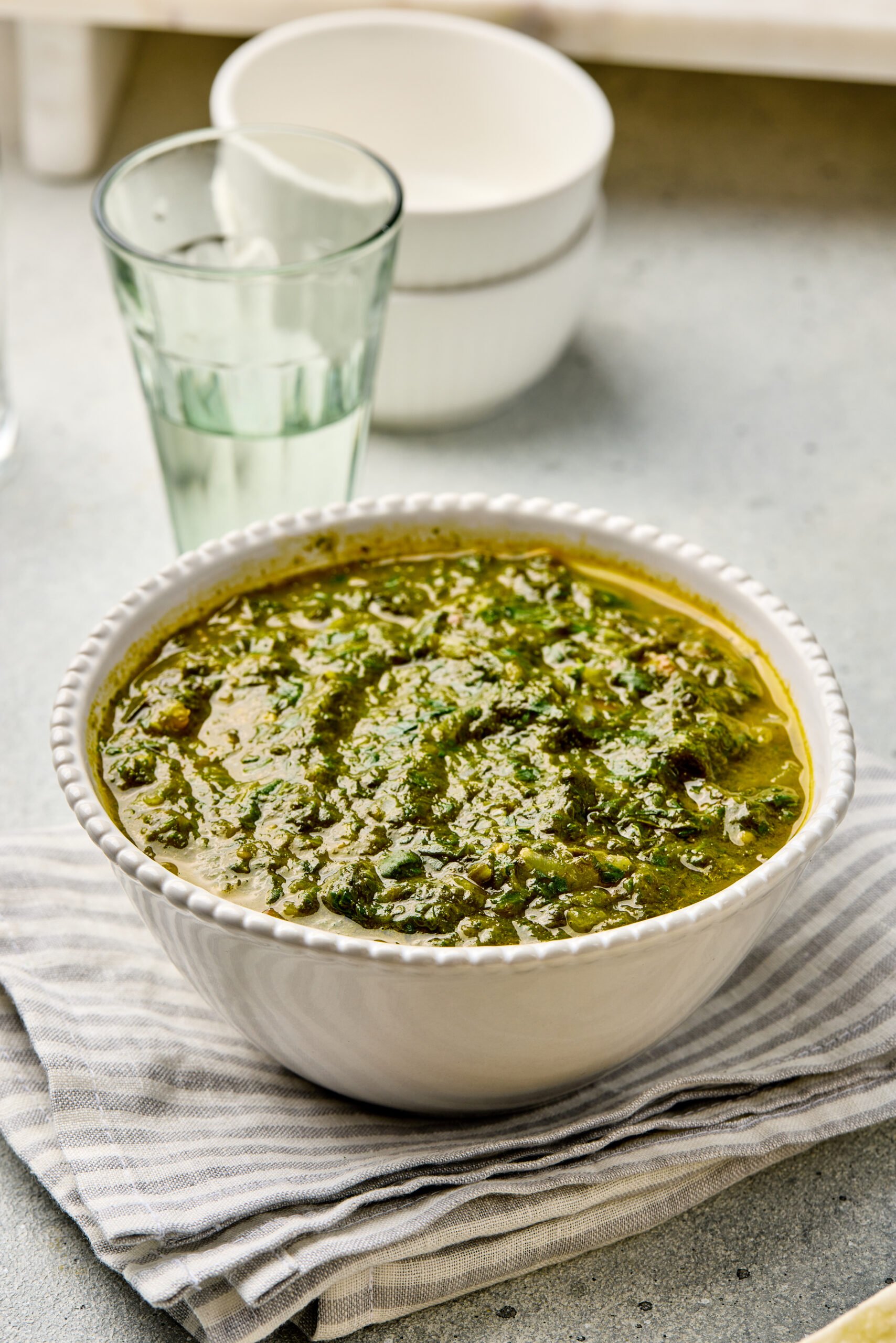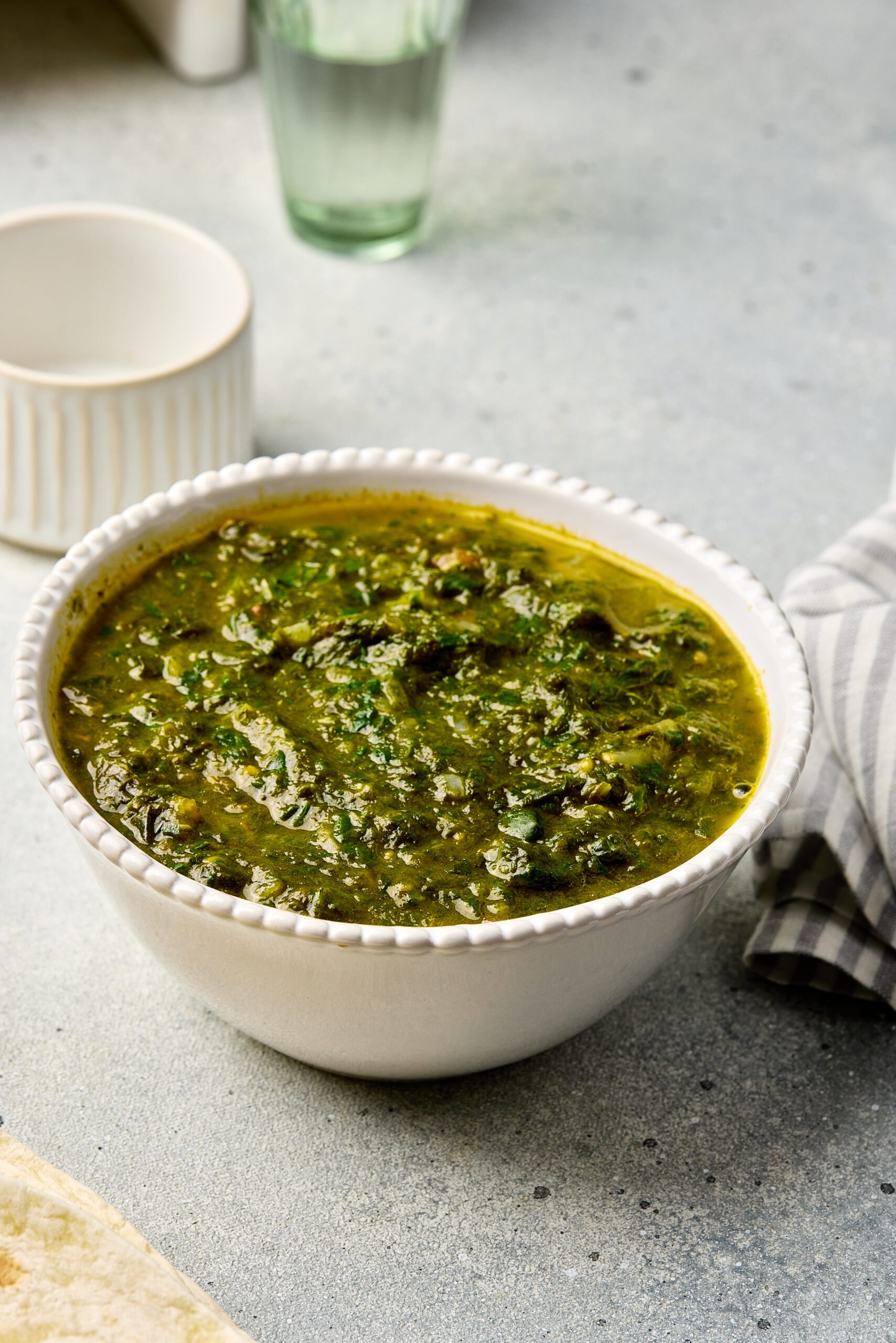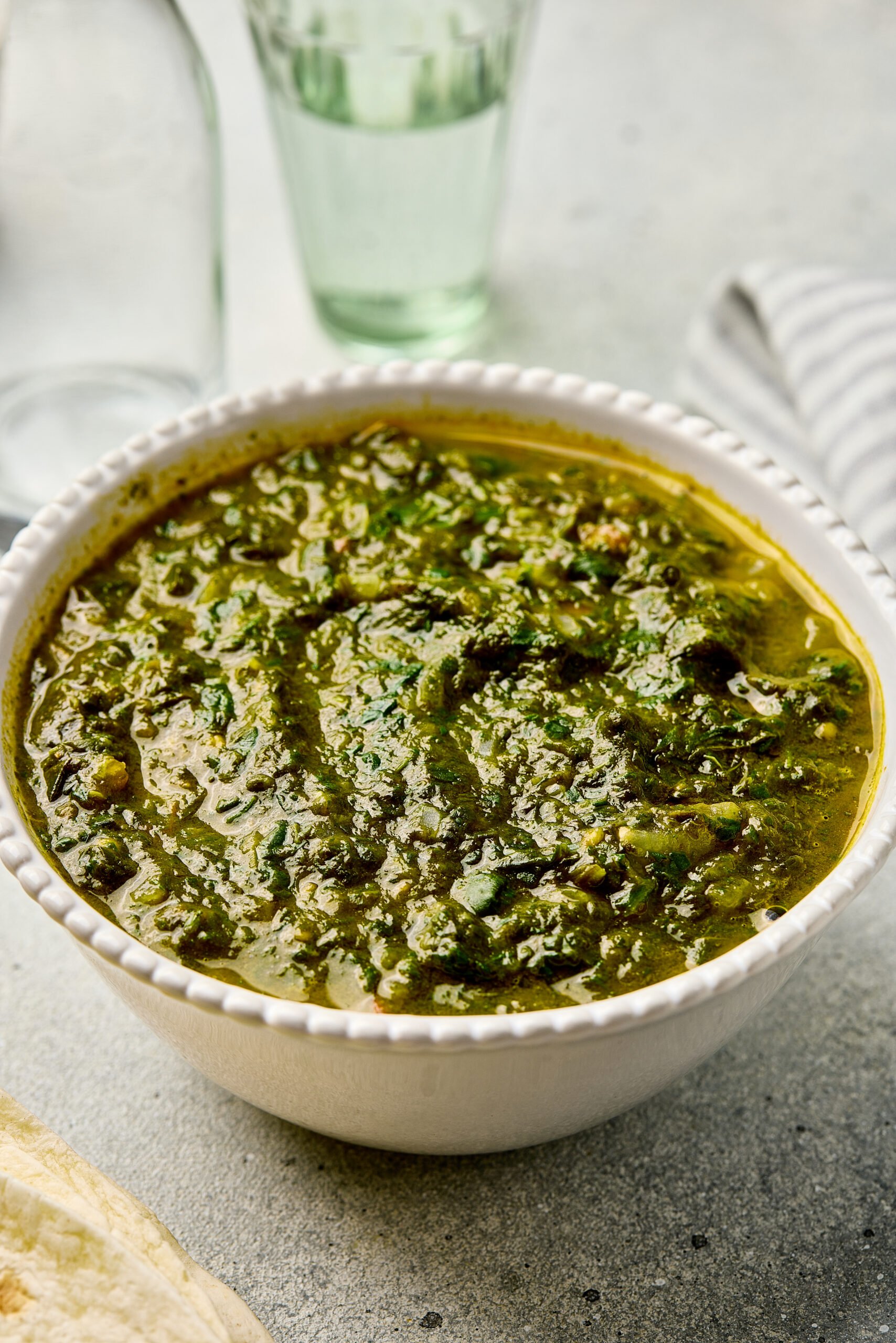
Saag is a dish that captures the warmth of Indian winters. A slow-cooked curry made with leafy greens like spinach, mustard leaves, and fenugreek, it’s earthy, nourishing, and deeply tied to Punjabi culture. The name itself simply means “greens,” but the taste is far from simple; rich, spiced, and comforting.
Historically, it has been a seasonal preparation, cooked in villages after mustard harvests and often paired with makki ki roti (corn flat bread). Over time, it became a celebrated dish across India, especially in the north, where it’s considered festive food and an expression of hospitality. Today, it has crossed borders, appearing in Indian restaurants worldwide as a hearty vegetarian favorite.
When I first tasted it with a dollop of homemade butter on hot makki ki roti, I understood why people call it soul food.
Why You’ll Love My Recipe
- Traditional, wholesome, and full of flavor
- Rich in nutrients from leafy greens
- Comfort food that’s perfect with flatbreads
- Gluten-free and vegetarian
- Can be customized with different greens



Saag
Ingredients
Greens
- 450 g mustard greens chopped (or substitute kale or collard greens)
- 225 g spinach chopped
- 2 green chilies chopped
- 8 g chopped fresh ginger or 2.5 cm fresh ginger piece
- 9 g chopped garlic cloves or 3 garlic cloves
- 100 g chopped onion or 1 medium onion
- 200 g chopped tomatoes or 2 medium tomatoes
Spices & Seasoning
- 30 ml ghee or neutral oil
- 3 g cumin seeds
- 3 g ground coriander
- 1 g turmeric
- 2 g Kashmiri chili powder or mild paprika
- Salt to taste
To Finish
- 30 g cornmeal or chickpea flour optional, for thickening
- 30 g butter optional, for richness
Instructions
- Blanch the greens: Boil water in a large pot. Add mustard greens and spinach. Cook 3–4 minutes until wilted. Drain and cool.
- Blend: Blend greens with green chilies, ginger, and garlic to a coarse paste.
- Cook the base: Heat ghee in a large pan. Add cumin seeds, then onion. Sauté until golden. Stir in tomatoes, coriander, turmeric, chili powder, and salt. Cook until tomatoes soften into a paste.
- Simmer the saag: Add the blended greens. Stir well and cook on low for 20–25 minutes, adding water if too thick.
- Thicken and finish: Stir in cornmeal or chickpea flour if you prefer a thicker texture. Finish with butter if desired.
- Serve: Enjoy hot with makki di roti, naan, or plain rice.
Notes
Nutrition
FAQs
What is the difference between saag and palak?
Saag refers to any leafy greens curry, while palak specifically means spinach.
Why is maize flour added to greens curry?
It thickens the curry and gives an authentic earthy taste.
Can I make saag with just spinach?
Yes, though adding mustard greens gives the traditional flavor.
Is saag healthy?
Absolutely, it’s rich in iron, fiber, and vitamins from leafy greens.
Troubleshooting
My saag tastes bitter
Mustard greens can be naturally bitter. Blanching well and cooking low and slow helps mellow it. If the bitterness still stands out, stir in a small spoon of butter or a pinch of jaggery right at the end.
It turned too watery
Simmer longer to evaporate moisture. A spoon of cornmeal or chickpea flour also helps thicken without changing the flavor. Avoid adding too much water early on; greens release liquid as they cook.
It became too thick
Add a splash of warm water or light vegetable broth while stirring. Saag should be thick, but not pasty.
It lost its green color
Overcooking or boiling greens too long can dull the color. Blanch briefly and cook on low heat after adding to the base. A pinch of turmeric helps maintain a warm green tone.
The greens taste raw
Saag needs time for the flavors to settle. Give it at least 20 minutes of gentle simmering so the greens soften, sweeten, and blend with spices.
My saag tastes flat
Add a little more salt and a touch of ghee at the end. A tiny squeeze of lemon or a pinch of amchur brings brightness if it feels too earthy.
It's not smooth enough
Blend only part of the greens and leave the rest coarse, then simmer longer. Saag is meant to have body, not be completely puréed.







Have a question or something to share? Leave a comment below!